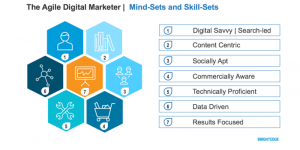Without a doubt, customer cart abandonment has become the chief nuisance of the online shopping business community. It’s estimated that an average 75% of online shopping cart purchases are abandoned with customers digitally filling up with products and then choosing to simply walk away. It can be frustrating for an online marketplace and, likewise, the methods that businesses use to lure customers back to their abandoned carts frustrate consumers! In many ways, customer cart abandonment is a lose-lose for all parties involved.
Higher shipping costs, technical or interface issues as well as customer purchase anxiety all lead to customers abandoning their carts. The issue will remain a major problem unless we can change consumer behavior to eventually avoid the problem all together. But to better understand how to change customer behavior, it’s imperative to understand customer attitudes toward this abandonment and how the data stacks up.
Causes of Abandonment
A recent study found that a whopping 58.6% of online shoppers in the United States have abandoned a shopping cart in the last three months, citing, “I was just browsing/not ready to buy.” Amazingly, most people won’t even get to the checkout screen before leaving their cart.
There are laundry lists of other reasons why customers abandon their carts as well: Extra costs are too high (61%), necessity of a created user account (35%), too long or complicated checkout process (27%), errors in the website or interface (22%) and many more.
Now, unlike the “just browsing” response, many of these issues can be easily fixed by bug squashing and interface overhaul. By resolving these issues through a simple UI facelift or a streamlining of the checkout-process, businesses across the globe can expect to recover over $ 250 billion in lost revenue through customer cart abandonment!
”Helpful” Reminders
After customers abandon their digital goods to the cart, it’s not uncommon for a business to send a helpful reminder to try and draw said customer back to their purchase. This kind of notice is an integral part of any effective email marketing campaign and cannot be avoided. Fortunately, 20% of abandoned sales can be recouped through campaigns such as this.
And, luckily, nearly half of all consumers find these kinds of reminders helpful. This data dispels the common concern that consumers see marketing campaigns wherein personal shopping data is used to tailor an experience to them as invasive or intrusive. Remarkably, 74% of consumers feel either neutral or disagree that these abandoned cart reminder emails are intrusive. Moreover, only 35% of “frequent shoppers” ever expect a reminder email after abandoning their cart.
The jury’s out when it comes to the timing of the email reminder. Some companies send the reminder ten minutes after the cart is abandoned, some within the first 24 hours, and others after three days or so. Customer expectations of the timing of these reminder emails are dotted all along the spectrum so it will be an interesting field for further research in trying to find the best time to send the reminder email!
Bringing Them Back
About a third of consumers stated that they were likely to return to a business’s site to either finish their original purchase or make a new one after getting a reminder about their abandoned cart. This is very good news for businesses. The issue, though, is getting that other 39% who state that they are “likely to do nothing” after opening (or receiving but not opening) an email reminder. The research seems to suggest that tailoring email reminders that speak directly to this portion of people is critical.
Some of the ways to entice customers to return are incentives like discounts on goods or shipping. As expected, a little over half of online shoppers deemed special savings or discounts as greatly influencing the return of a shopper who had abandoned their cart. Including shipping costs in the reminder email was the second most persuasive element for 36% of consumers.
Other methods, like putting a timer or an expiration date on the cart to impart a sense of urgency on the consumer to finish their purchase, seem to effect customers negatively.
Looking Forward
Nowadays, consumers are more connected than ever. They have the ability to instantly compare prices and move between online shopping outlets with a swipe of their finger. It’s become the primary concern of online retailers to know their customer better than ever. Using the data, though, will help businesses ameliorate the consumer experience and end or, at the very least, mitigate customer cart abandonment. This data will also allow the business and the consumer to grow closer than ever, creating a more “personal” relationship with consumers as the business tailors the shopping experience ever keener to the customer and their needs.
Digital & Social Articles on Business 2 Community(34)






